|
|
Class |
Insecta |
|
Order |
Hemiptera |
|
Family |
Coreidae |
The sweetpotato bug and giant sweetpotato bug can cause occasional severe
damage to crops but are generally considered minor pests of sweetpotato.
Sweetpotato bug is
found in Southeast Asia; the giant sweetpotato bug is present in northern South
America and
the Caribbean, and has recently been reported in south-eastern USA
The nymphs and adults pierce the stems and petioles of sweetpotato and suck
the plant sap causing stunting and wilting.
Sweetpotato bug:
Egg. The eggs
are usually laid in a dense cluster, on the stem or beside veins on the lower
leaf surface. They are oval with one end tapering, light brown when newly laid turning bronze-brown
after a few days. A cap is formed around the rim of the dorsal region when about
to emerge.
Nymph. Earlier nymphal instars
have a light orange head, light brown thorax and orange abdomen with reddish
spots. The legs are greenish to black. The body of later instars is greyish to
black with black head, black legs and olive green abdomen. Later instars are
similar to earlier instars except for the large spots on the abdomen which
turn black with maroon outer layer and the numerous small dark orange
spots turning maroon. There is a distinct line resembling the letter Y
from eyes down to the abdomen, and wing pads that become distinct. Full grown
nymphs measure 10 to 15 mm.
Adult. The body of the
female adult is broad
and elongated, light greyish to black dorsally
and dull yellow ventrally. The head is
black with reddish brown bulging compound eyes and thirteen mm 4-segmented black
filiform antennae. The femur of the third leg is enlarged. The total body length
ranges from 19 to 24 mm. The male is similar to the female except for the
grayish to black abdomen with minute black punctures and much larger femur with
tibial claw.
Giant sweetpotato bug:
Adults are of similar length to sweetpotato bug, but are broader and have
shorter antennae. They are uniformly dark brown, and have an unpleasant
odor. Nymphs are initially red, but become dark brown with reddish spots
on the head and sides of the abdomen.
The female sweetpotato bugs start laying eggs 10-18 days after mating. The eggs are laid
in batches along the veins on the underside of the sweetpotato leaf or on the
stem. The eggs are laid close to each other but sometimes laid separately. An
adult female lays 59-697 eggs with 69% hatchability. The incubation period lasts
11-21 days. The insect undergoes five nymphal instars, each stadium last from 6
(first instar) to 19 days (fifth instar) with a total nymphal period of 60-85
days for the male and 63-89 days for the female. The nymphs are gregarious and
remain close to the empty eggs until the first moulting. Total life cycle takes
74-96 days for the male and 76-99 days for the female. Male to female ratio is
1.38:1.00. Adults live from 3 to 4 months. Adults may disperse in large
numbers.
The limited information available suggests that giant sweetpotato bug has a
similar life cycle and habits.
These bugs prefer sweetpotato and related species. Plants which serve as host of sweetpotato bug include Ipomoea aquatica
, I. triloba and Bacilla rubra. Giant sweetpotato bug has
been recorded on Solanaceae such as tomato, eggplant and potato, as well as on
avocado and citrus, but it is not known if these crops support breeding
populations, or only harbour dispersing adults.
Biological control
A wasp belonging to family Eulophidae attacks the eggs. Parasitism in the
field reaches as high as 49 %. Only one parasite emerges from each egg.
Unidentified ant species preys on first instar nymphs.
Sweetpotato cultivars appear to differ in their susceptibility to damage by
the bugs.
Amalin, D.M. and Vasquez,E.A. 1993. A handbook on Philippine sweet potato
pests and their natural enemies. International Potato Center (CIP), Los Baņos,
Philippines. 82 p.
Halbert, S.E. 2003. Giant Sweetpotato Bug. Featured Creatures Factsheet EENY-305, Entomology and Nematology Department, Florida Cooperative
Extension Service, Institute of Food and Agricultural Sciences, University of
Florida. http://edis.ifas.ufl.edu/IN582
Ronato, S. F. 1984. Biology of the sweet potato bug, Physomerus grossipes
Farb. (Coreidae, Hemiptera. Unpublished Undergraduate Thesis. Visayas State
College of Agriculture, Baybay, Leyte, Philippines.
Vasquez, E. A. and
Sajise, C.E. 1990. Pests of sweet potato: Insects, mites and diseases.
Philippine Root Crop Information Service, Philippine Root Crop Research &
Training Center. 65 p.
Contributed by: Erlinda
Vasquez,
Vilma Amante, and
Jane O'Sullivan
|
Taxonomy
Economic
importance
Geographical
distribution
Damage
Morphology
Biology
and ecology
Host
range
Management
References
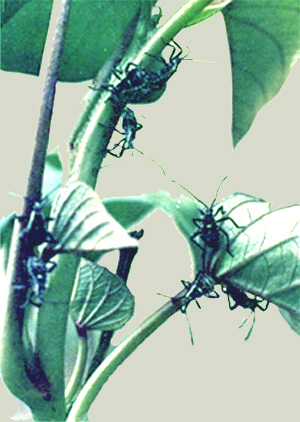
Nymphs
of sweetpotato bug suck on stems and petioles (E. Vasquez).

Eggs
on leaf (E. Vasquez).
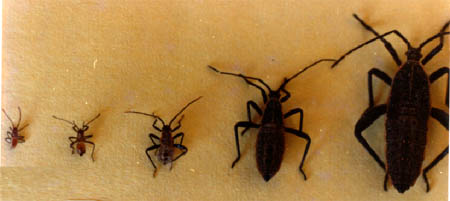
Nymphs
of sweetpotato bug (from L to R: 1st to 5th instar)
(E. Vasquez).
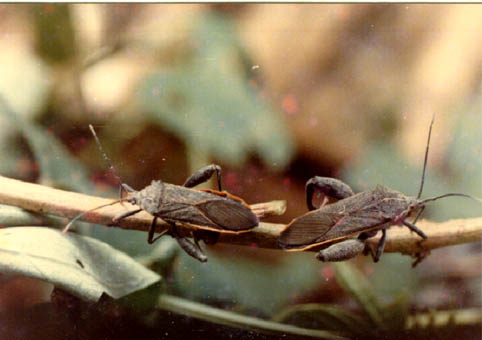
Adults
of sweetpotato bug: female (left) and male (right) (E. Vasquez).
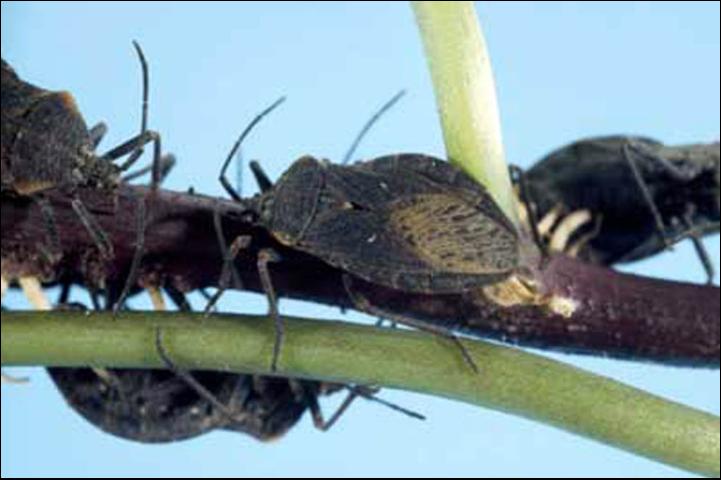
Giant sweetpotato bugs (J. Lotz, FDACS).
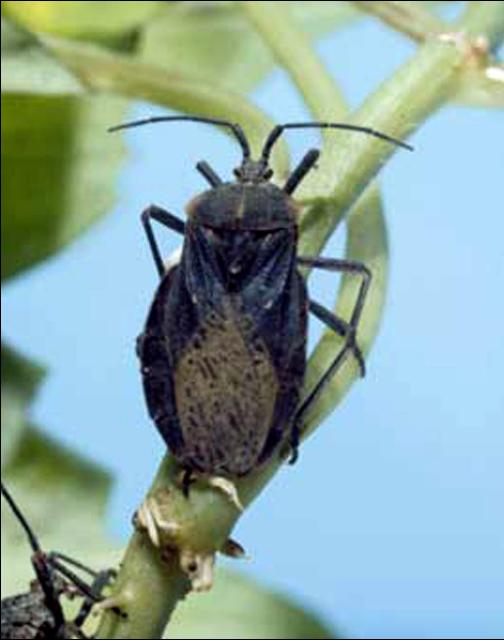
Dorsal view of a giant sweetpotato bug J. Lotz, FDACS).
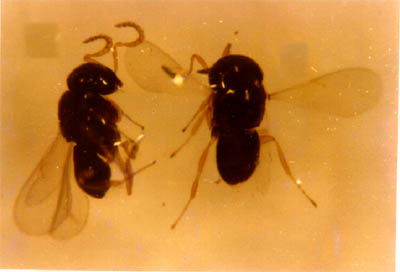
Parasitic
wasps which attack the eggs of sweetpotato bug
(E. Vasquez). |

